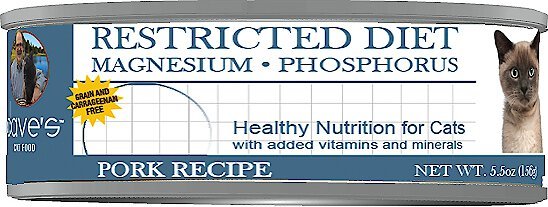4health with Wholesome Grains Adult Salmon and Potato Formula Dry Dog Food
Keep your dog healthy, happy and full with the 4health with Wholesome Grains Adult Salmon and Potato Formula Dry Dog Food. The wholesome, carefully selected ingredients provide optimal nutrition for adult dogs of any breed. The kibble is made from real salmon and potato to deliver quality protein and mouthwatering flavor. In addition, all the essential vitamins and minerals – from taurine to omega fatty acids – are added. Probiotics in the dog food also help maintain the proper balance in your dog’s digestive system. Pick up a bag of 4health dry dog food today. Made in USA.
Keep your dog healthy, happy and full with the 4health with Wholesome Grains Adult Salmon and Potato Formula Dry Dog Food. The wholesome, carefully selected ingredients provide optimal nutrition for adult dogs of any breed. The kibble is made from real salmon and potato to deliver quality protein and mouthwatering flavor. In addition, all the essential vitamins and minerals – from taurine to omega fatty acids – are added. Probiotics in the dog food also help maintain the proper balance in your dog’s digestive system. Pick up a bag of 4health dry dog food today. Made in USA.
- DEPENDABLE NUTRITION: 4health is manufactured following rigorous quality-control processes and contains carefully selected ingredients.
- TAURINE: Taurine-fortified to help support a healthy heart.
- GLUCOSAMINE AND CHONDROITIN: Contains 300 mg/kg glucosamine hydrochloride and 100 mg/kg chondroitin sulfate.
- GUARANTEED PROBIOTICS: Each cup of food provides live, active cultures to support healthy digestive and immune systems, and help your dog maintain an active lifestyle.
- SKIN AND COAT: A blend of omega-6 and omega-3 fatty acids helps keep the skin and coat healthy and shiny.
- ANTIOXIDANT FORMULATION: Contains guaranteed levels of zinc, selenium and vitamin E for immune-supporting antioxidant nutrition.
- AAFCO STATEMENT: 4health Salmon & Potato Formula for Adult Dogs is formulated to meet the nutritional levels established by the AAFCO Dog Food Nutrient Profiles for maintenance.
Additional information
| Country of Origin | Made in USA |
|---|---|
| Breed Size | Extra Small, Small, Medium, Large, Extra Large |
| Flavor | Salmon and Potato |
| Health Features | Heart Health, Immune System Support, Digestion Support, Skin & Coat Health |
| Life Stage | Adult |
| Primary Flavor | Potato, Salmon |
| Special Diets | With Grain, Probiotics, Preservative Free, AAFCO Formulated, Omega Fatty Acids |
| Manufacturer Part Number | 9690 |











by Kim
Dog with allergies this is the product
by Patrol
We have a dog with skin problems. This food cleared them up. Didn’t cost me 90 dollars a bag.
by Bailey
Great for dogs with chicken allergies.
by Kathy
My 3 dogs like this food!
by Kritters
My 12 yr old dog has allergies and this food has seemed to help him a bit with that issue. He seems to enjoy the taste and quickly clears his bowl at every meal. The price is decent for the quality of food and they are pretty good about managing to keep this food in stock on a regular basis. Probably because it’s the food that’s made just for tractor supply.